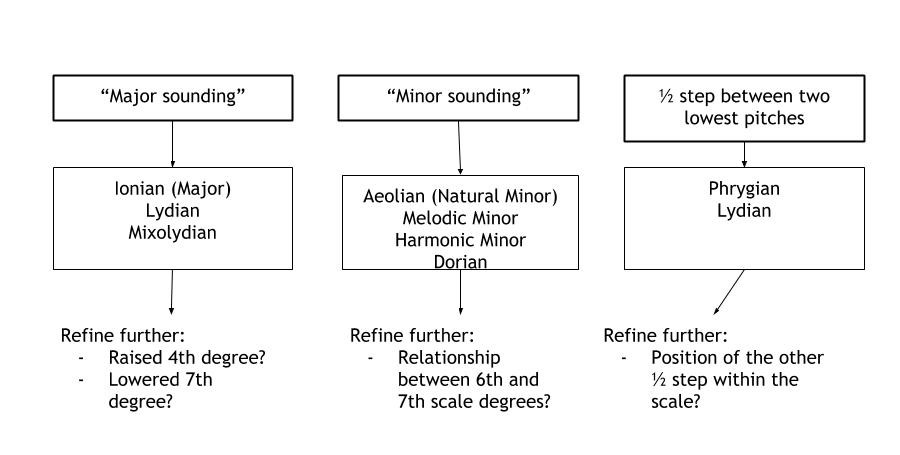Integrated Aural Skills 2019-20
Ear Training - Mastery of Major, Minor, and Modal Scales
Two Procedures for Modal Scales
As you know, there are two procedures by which we can name solfege syllables in the modal scales. Both procedures are relevant to the study of diatonic music using solfege because modes appear in different contexts. Both procedures are good ones, so pick the one that works most successfully for you.
- One method relates all modes to the major scale, simply starting on different solfege degrees (i.e. the Dorian scale is labeled re-mi-fa-sol-la-ti-do-re).
- Another method has all modes begin on do and adjust the solfege syllables accordingly to allow for the chromaticism that defines the mode (i.e. the Dorian scale is labeled do-re-me-fa-sol-la-te-do).
In Unit 13, we studied flow charts that helped differentiate the modes using the first method. We can, of course, use the other method to categorize all the scales and modes studied so far into three broad groups: “major-sounding,” “minor-sounding,” and “1/2 step below the lowest two pitches.”
